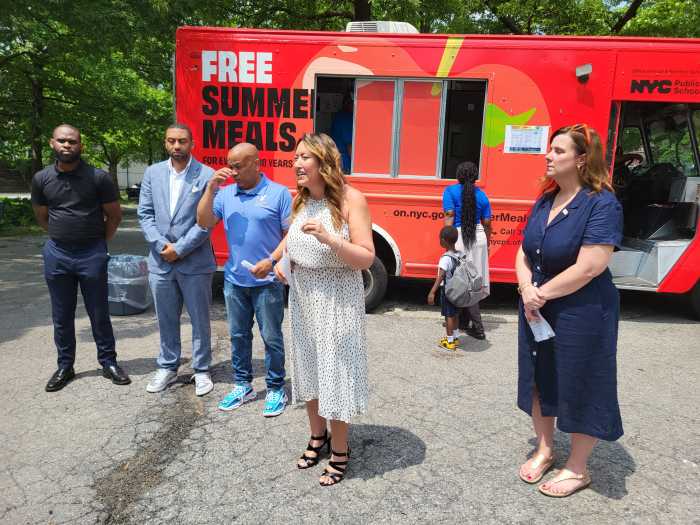
Rents have gotten so out of reach for the poorest New Yorkers, those making minimum wage can’t afford the median rent in any city neighborhood, according to a report released Tuesday.
Those looking to live alone would need to make $38.80 an hour — a giant leap from the current $8.75 minimum wage — to afford the city’s median asking rent of $2,690 a month — according to a report by Street Easy, a real estate listings site.
Manhattan, naturally, is the most costly borough, requiring renters to make $44 an hour, followed by Brooklyn ($35.87), Queens ($29.67), Staten Island ($26.21) and the Bronx ($21.26).
A state wage panel approved a proposal — lobbied for by advocates, workers and labor unions — last month to raise the minimum wage to $15 an hour for fast food employees in 2018.
However, even that significant bump won’t make much of a difference in the ever-rising rental market.
“The campaign to raise minimum wage is well fought by [those groups], but it’s really a drop in the bucket,” said Alan Lightfeldt, the Street Easy data scientist who wrote the report.
Lightfeldt calculated the minimum hourly income based on Street Easy’s median rent for the neighborhoods the listing site covers, a 40-hour workweek and “affordable rent,” which is defined as paying no more than 40% of income on rent.
Throgs Neck in the Bronx is the only neighborhood where rents would be affordable under a $15 an hour minimum wage since one would need to make $13.64 an hour to pay for the $946 median monthly rent, according to Street Easy’s report.
In Central Park South, one would need to make $85.07 an hour to meet the median monthly $5,898 rent.
City Councilman James Vacca, who represents Throgs Neck, said the neighborhood’s affordability, like other areas in the Bronx, is in jeopardy. He said many of the landlords have to raise rents due to higher taxes, water rates and other factors.
“Neighborhoods like mine have to remain affordable and support the middle class. They are being squeezed out,” he said of tenants and landlords.
The situation has resulted in one of three scenarios for working class New Yorkers, according to Lightfeldt: living with multiple roommates, working several jobs or leaving the city altogether.
Aracelly Lima, 27, of Jackson Heights, who works two jobs, one that pays $8.75 an hour and the other $10 an hour, knows that struggle too well. Lima, who is an advocate for the nonprofit Make the Road New York said she lives with three others and the cramped conditions to her problems.
“This study speaks to the reality for thousands, if not millions, of New Yorkers like myself who simply can’t afford to live in the city we work in,” she said in a statement. “Those who say $15 an hour is too high should be ashamed of themselves.”
Lightfeldt warned that income wasn’t the only factor for solving the problem. Lowering rents by increasing the affordable housing stock needed to compliment the improved minimum wages, and pushed the city to come up with policies that create those units.
A spokeswoman for Mayor Bill de Blasio’s office said the administration is committed to reaching 200,000 new and preserved affordable housing units over the next 10 years but wants the state to take a proactive approach to fighting poverty.
“This study reaffirms what too many New Yorkers already know: it’s past time for Albany to raise the wage,” the spokeswoman said in a statement.



































